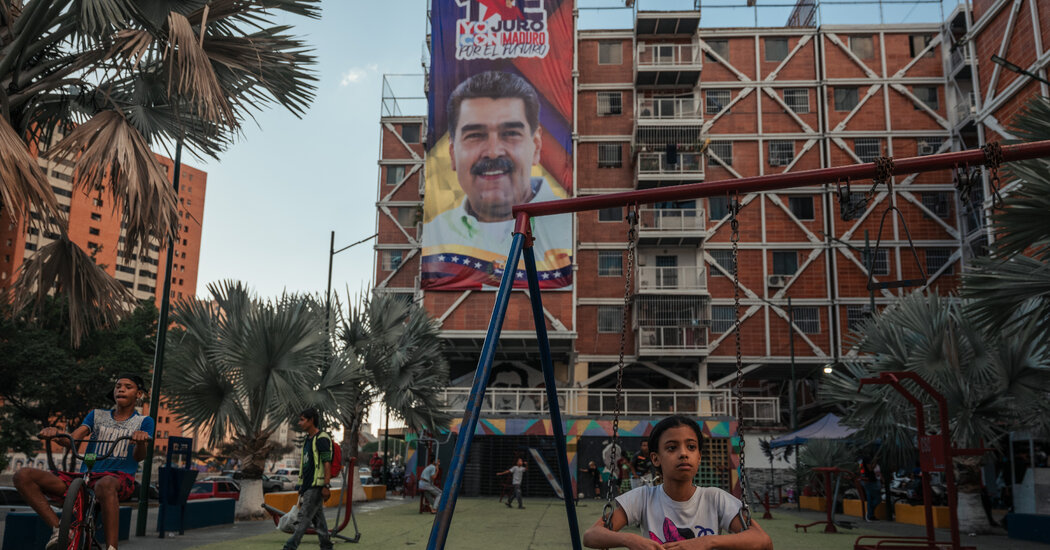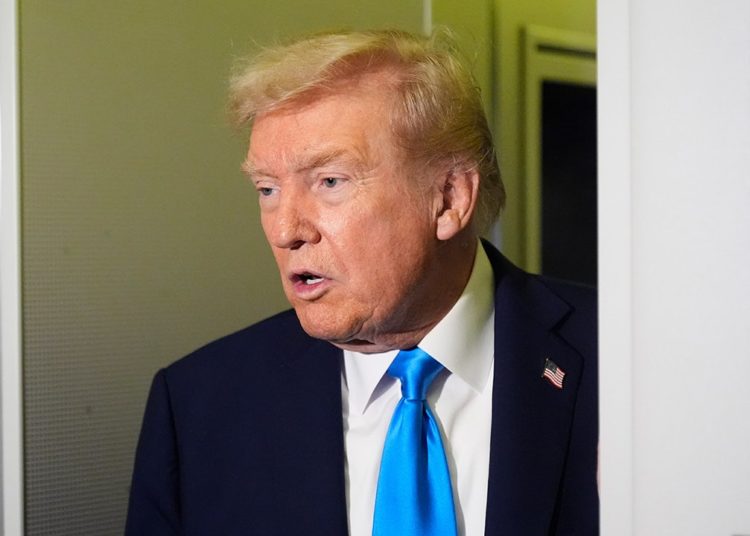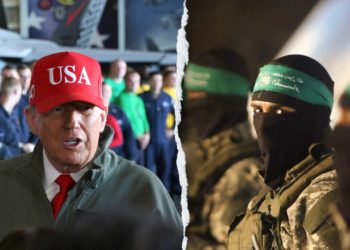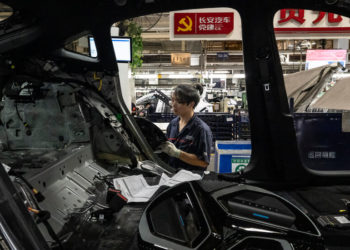While the large U.S. military force now in the Caribbean is ostensibly there to fight Venezuelan drug traffickers, officials have all but acknowledged that the real goal is to oust Venezuela’s autocratic president, Nicolás Maduro. The military pressure deepened on Friday with the deployment of an American aircraft carrier to the region.
As the Trump administration doubles down on its campaign against Mr. Maduro, officials may very well have in mind Washington’s last overthrow of a Latin American leader, also accused of ties to the narcotics trade, Gen. Manuel Noriega of Panama, in 1989. It was an operation many hailed — wrongly, in some respects — as a quick and easy victory that ousted a repressive strongman and led to his imprisonment for drug trafficking.
The situation in Venezuela is far different, and seeking regime change there could be disastrous for the United States and the region. It is also important to recognize how doing so would fit into a larger pattern of American intervention in Latin America.
To begin with, the contrasts between Panama and Venezuela: Panama is a small country with a population at the time of the invasion of fewer than three million people. It is situated at a strategic choke point on the Central American isthmus and bifurcated by the Panama Canal, which was then still under U.S. control. It was home to the U.S. Southern Command and a permanent U.S. garrison.
Venezuela is a sprawling, geographically diverse country with a population of nearly 30 million. The United States maintains no military installations there, and it is not home to a strategic asset like the Panama Canal, unless you include oil reserves. Venezuela’s neighbors Colombia and Brazil have been at odds with the Trump administration. As policy analysts across the political spectrum have argued, the likeliest outcome of a U.S. invasion that topples Mr. Maduro is a surge in regional instability, and, according to a recent report by the Stimson Center, a worsening of the conditions leading to drug trafficking, conflict and migration.
Intervention in Venezuela falls into the larger framework of how the United States has historically acted in Latin America: exercising the “international police power” of Theodore Roosevelt’s corollary to the Monroe Doctrine. This principle asserts that Washington has the right to interfere in the affairs of Latin American nations — especially those perceived to run afoul of U.S. interests.
U.S. intervention has been a constant in America’s relationship with Latin America even during periods of supposed isolationism or, to put it in Trumpian terms, “America First.” A prime example was in the years after World War I, when Washington largely retreated from European affairs but kept its military active in the hemisphere, staging interventions in Honduras, Nicaragua and the Dominican Republic, among other countries.
The historian Greg Grandin has argued that one interpretation of U.S. involvement in 1980s civil conflicts in Central America was as an attempt by the conservative movement to redeem the failures of the Vietnam War, and, in so doing, renew the nation’s sense of purpose in the fight against Communism. But wars in El Salvador, Guatemala and Nicaragua, conducted with U.S. support for right-wing combatants, quickly became morasses, leading to political blowback in the United States and the torture, death and disappearance of thousands of people across the region. Ultimately, the wars also led to large-scale Central American migration to the United States.
Under Ronald Reagan, the United States intervened in those conflicts using overt, covert and illegal means, but, although it trained, equipped and, in some cases, assisted allies in the region, it stopped short of sending troops to fight in the wars directly.
Only in Panama did the United States launch a full-scale invasion with the goal of removing a head of state. That invasion was ordered by Mr. Reagan’s successor, George H.W. Bush. It was intended to be a swift and overwhelming show of force that would strike a blow against drug trafficking and restore American primacy. It was indeed, in many senses, the anti-Vietnam.
The U.S. military promptly dismantled Panama’s armed forces and toppled Mr. Noriega, leading to the installation of a pro-United States civilian government. American casualties were limited; 23 service members were killed and more than 300 wounded. The operation demonstrated that, in Panama at least, Washington could still strike effectively to achieve its political goals.
Yet the truth was not nearly so neat. In the process, U.S. forces leveled El Chorrillo, a working-class neighborhood that was home to primarily Black and mixed-race Panamanians. The United States documented around 300 Panamanian civilian deaths, but the actual toll of civilian dead remains in dispute; some international organizations estimate hundreds more died, and some Panamanian organizations claim the death toll reached into the thousands. In recent years, the Panamanian government has exhumed and identified victims of the invasion who were buried in mass graves.
While the exact number of casualties may never be established, certain facts are beyond dispute. The destruction of El Chorrillo, where Mr. Noriega’s headquarters was based, displaced thousands of working-class Panamanians, many of whom were forced to shelter in refugee camps. The invasion drew widespread international condemnation, including from the United Nations General Assembly.
Even after the fall of Mr. Noriega, political instability persisted in Panama while crime increased, requiring the continued intervention of the U.S. military to maintain order. Congress approved $420 million in aid to help rebuild Panama, but a later report from the Government Accountability Office found the package was largely ineffectual. Drug trafficking through Panama to the United States did not stop, and may have actually increased.
If Operation Just Cause, as the U.S. invasion of Panama was code-named, was undertaken to redeem the disasters of Vietnam and perhaps even the complications of earlier U.S. involvement in the civil wars in Central America, it is not so difficult to see a possible invasion of Venezuela as an attempt to exorcise U.S. military setbacks in Iraq and Afghanistan.
The invasion of Panama and a possible invasion of Venezuela do have some parallels. Like Panama in 1989, Venezuela poses no imminent security threat to the United States, despite what Mr. Trump has said. Mr. Maduro is not uniquely responsible for either migration or the flow of drugs into the United States. Instead, a potential assault on Venezuela would appear to be a pre-emptive war of choice, undertaken in part, as Operation Just Cause was, to satisfy a domestic constituency of the Republican Party, represented by Secretary of State Marco Rubio, who has long advocated regime change in Venezuela, and distract critics of Mr. Trump’s domestic policies.
U.S. interventions in Latin America, whatever their underlying rationale, visit very real suffering on ordinary people who find themselves in the path of the U.S. military. Even in Panama, where circumstances in 1989 were favorable to America’s aims, the operation was neither bloodless nor painless, nor completely successful. How much more serious will the consequences of such adventurism be in Venezuela?
Dennis M. Hogan teaches in the history and literature program at Harvard. His research focuses on Central America and the United States in the 19th and 20th centuries.
The Times is committed to publishing a diversity of letters to the editor. We’d like to hear what you think about this or any of our articles. Here are some tips. And here’s our email: [email protected].
Follow the New York Times Opinion section on Facebook, Instagram, TikTok, Bluesky, WhatsApp and Threads.
The post Venezuela Will Be No Panama appeared first on New York Times.




